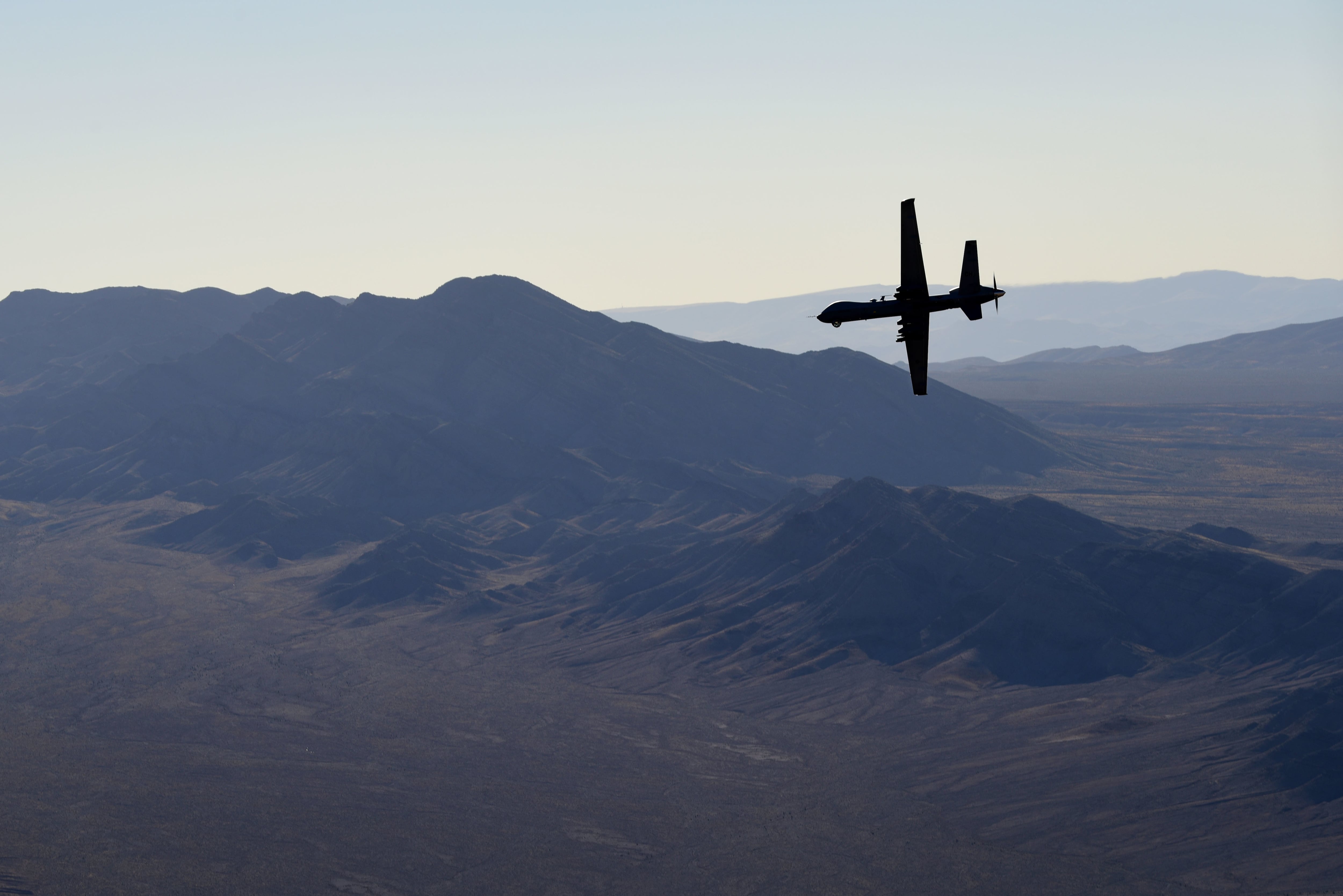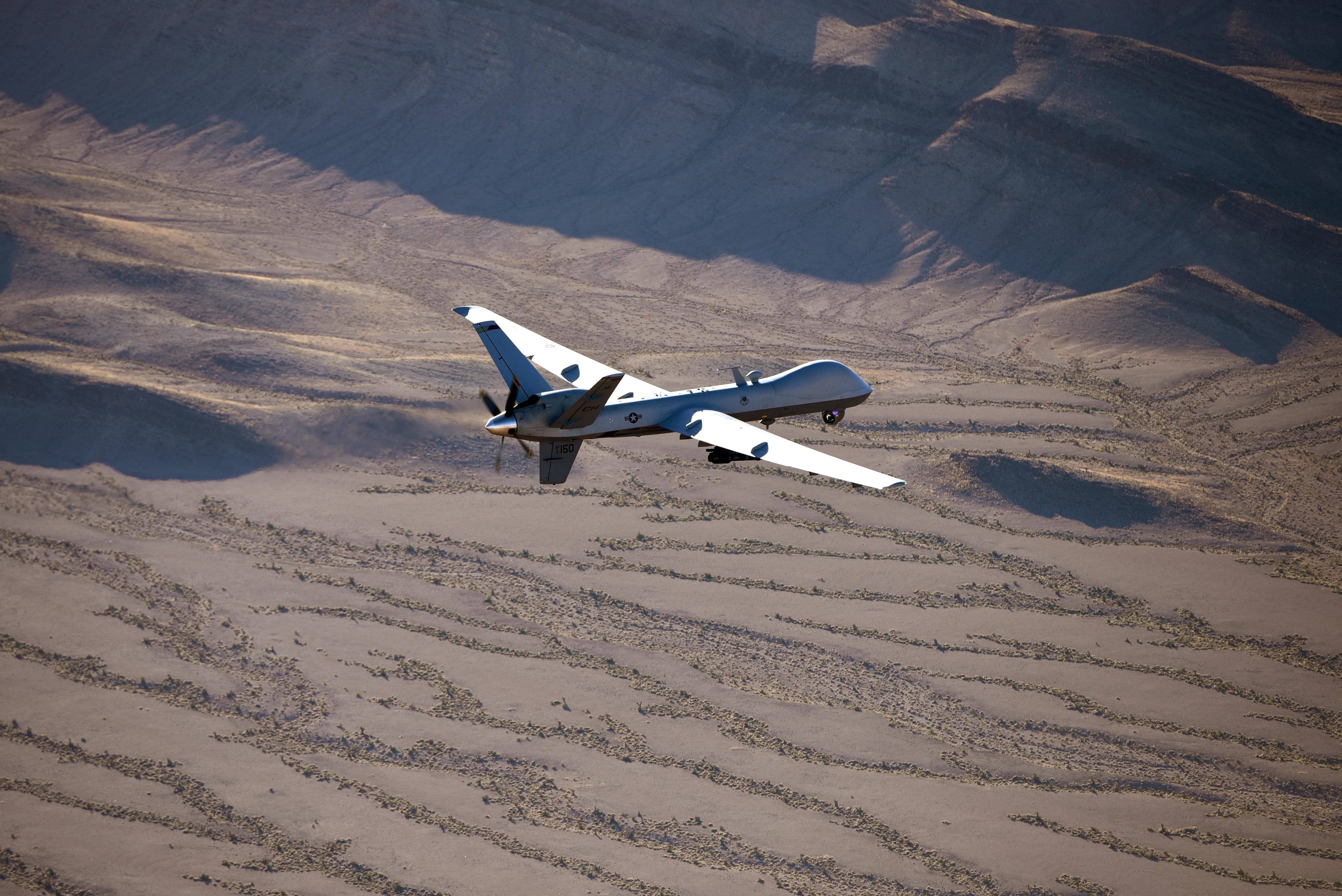NATIONAL HARBOR, Md. — Drones, robots and other uncrewed technologies will play an increasingly vital role in U.S. Marine Corps operations, according to the leader of the service’s acquisition command.
Brig. Gen. David Walsh of Marine Corps Systems Command laid out the prospective uses of drones and robots April 4 at the Navy League’s Sea-Air-Space conference in National Harbor, Maryland. He also detailed the tripwires, technical or otherwise, that could hamper effectiveness in the field.
The Corps’ experimentation with systems that require no crew comes as part of an ambitious revamp of the service. Called Force Design 2030, the plan seeks to make Marines nimbler and less detectable in contested areas. A Force Design document from 2022 mentions the Long Range Unmanned Surface Vessel and “swarming” unmanned aircraft systems, among others, as an example. It also calls for drone capabilities to “expand and increase dramatically.”
“Everything from what we’re doing with LRUSV, we’re starting to experiment with those types of platforms, from small to large,” Walsh said. “They can move supplies and people and weapons around the battlefield,” especially in dispersed or treacherous conditions in the Indo-Pacific, he said.
Here’s how the Marine Corps may use uncrewed technology, according to Walsh:
A ‘persistent sensor’
Uncrewed systems will be a “persistent sensor” on battlefields of the future, Walsh said, capable of spying in places too distant or too chaotic to explore.
“Part of our role as a stand-in force is to do reconnaissance and counter-reconnaissance,” he said, referring to the concept of Marines constantly positioned close to an adversary. “So, this is persistent eyes on the battlefield, on the shipping lanes, on the sea lanes, that allow us to identify targets, maintain custody of those targets and” act accordingly.
Logistics
The Marine Corps’ logistics system is especially in need of modernization, Commandant Gen. David Berger has said.
The Corps last month published an updated logistics doctrine for the first time since 1997, in an effort to adapt to an increasingly contested environment. Drones will be a part of the Corps’ new logistics strategy, according to the doctrine.
Walsh said Tuesday that there is a “huge opportunity” for machines when it comes to shuttling resources.
RELATED

Can you hear me now?
Uncrewed tech could also serve as a communications relay, a means to boost signals and link far-flung Marines who would otherwise be disconnected and at risk of attack.
“Again, as we’re spread out in smaller units — extending out communications lines and maintaining communications, sharing data that we get from those sensors to somebody that can have an effect on target is really, really important,” Walsh said.
Electronic warfare
Uncrewed systems “of course” can play a role in “effects, fires, all-domain fires,” Walsh said.

Autonomous or remotely piloted vehicles could also be quickly jeopardized by foreign jamming or hacking, Walsh warned. Such invisible attacks would leave them ripe for interdiction.
“Operating in that contested EW environment, that contested spectrum, we have to be able to maintain control of those platforms and also be able to share the information those platforms are gathering,” Walsh said. “We have concerns about cybersecurity, especially looking at some of the commercial platforms.”
Both China and Russia are thought capable of interfering with U.S. networks and electronics. And given the heightened importance of cyber operations in a potential conflict, the Corps has emphasized the need to recruit and retain Marines with cyber skills.
Power supply
Ensuring uncrewed tech has enough power to keep going will be critical. And the matter is only complicated by the way Marines expect to fight in the future: in smaller groups, jumping from island to island, under constant threat.
RELATED

“We have concerns about power and energy. We need to fuel and power these systems somehow,” Walsh said. “Getting fuel, getting power, getting electricity to keep these things flying or operating is a challenge for us.”
The Corps this year published its Installation and Logistics 2030 strategy, which examines supply chains under fire.
In remarks accompanying the report, Lt. Gen. Edward Banta, deputy commandant for installations and logistics, described the U.S. as having been “spoiled by two decades of conducting strategic and operational logistics in a permissive environment.”
The development process
Uncrewed systems are a “fast-moving technology,” which means nailing down the best of the best and getting it to those who need it is difficult, Walsh said.
“The acquisition, keeping up with that, to ensure our Marines are able to take advantage of the cutting-edge technology, is always a challenge,” he said. “So as we look at those challenges, bringing the best of what industry has to the hands of our Marines, we want to be as agile as we can, particularly around capabilities, not so much platforms.”
Colin Demarest was a reporter at C4ISRNET, where he covered military networks, cyber and IT. Colin had previously covered the Department of Energy and its National Nuclear Security Administration — namely Cold War cleanup and nuclear weapons development — for a daily newspaper in South Carolina. Colin is also an award-winning photographer.
Irene Loewenson is a staff reporter for Marine Corps Times. She joined Military Times as an editorial fellow in August 2022. She is a graduate of Williams College, where she was the editor-in-chief of the student newspaper.








